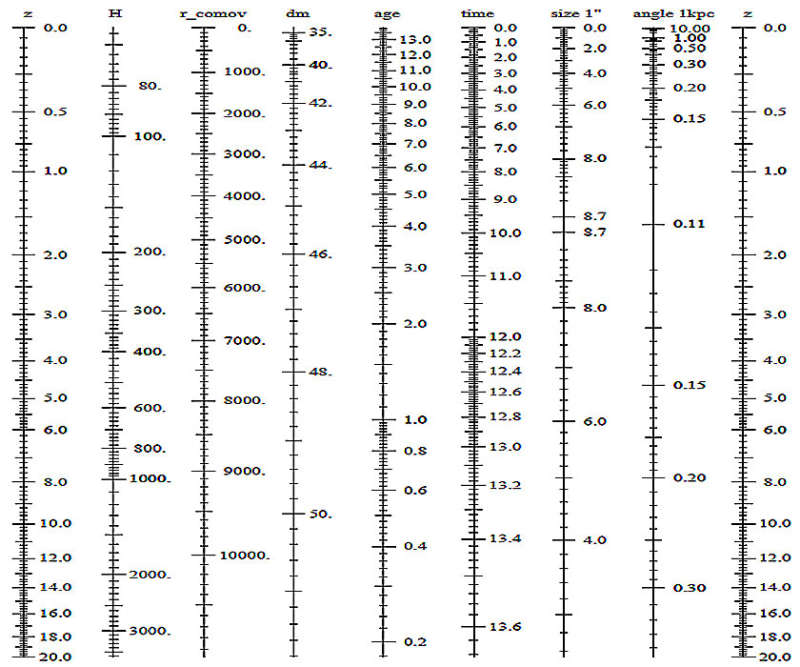Explanation: How far away is "redshift six"? Although humans are inherently familiar with distance and time, what is actually measured for astronomical objects is redshift, a color displacement that depends on exactly how energy density has evolved in our universe. Now since cosmological measurements in recent years have led to a concordance on what energy forms pervade our universe, it is now possible to make a simple table relating observed cosmological redshift, labeled "z", with standard concepts of distance and time, including the extrapolated time since the universe began. One such table is listed above, where redshift z is listed in the first and last columns, while the corresponding universe age in billions of years is listed in the central column. To find the meaning of the rest of the columns, please read the accompanying technical paper. Although stars in our galaxy are effectively at cosmological redshift zero, the most distant supernovae seen occur out past redshift one, which the above chart shows occurred when the universe was approximately half its present age. By contrast, the most distant gamma-ray bursts yet observed occur out past redshift six, occurring when the universe was younger than one billion years old, less than 10 percent of its present age.
1999 2000 2001 2002 2003 2004 2005 2006 2007 2008 2009 2010 2011 2012 2013 2014 2015 2016 2017 2018 2019 2020 2021 2022 2023 2024 2025 |
Январь Февраль Март Апрель Май Июнь Июль Август Сентябрь Октябрь Ноябрь Декабрь |
NASA Web Site Statements, Warnings, and Disclaimers
NASA Official: Jay Norris. Specific rights apply.
A service of: LHEA at NASA / GSFC
& Michigan Tech. U.
|
Публикации с ключевыми словами:
redshift - красное смещение - возраст Вселенной - шкала расстояний
Публикации со словами: redshift - красное смещение - возраст Вселенной - шкала расстояний | |
См. также:
Все публикации на ту же тему >> | |
